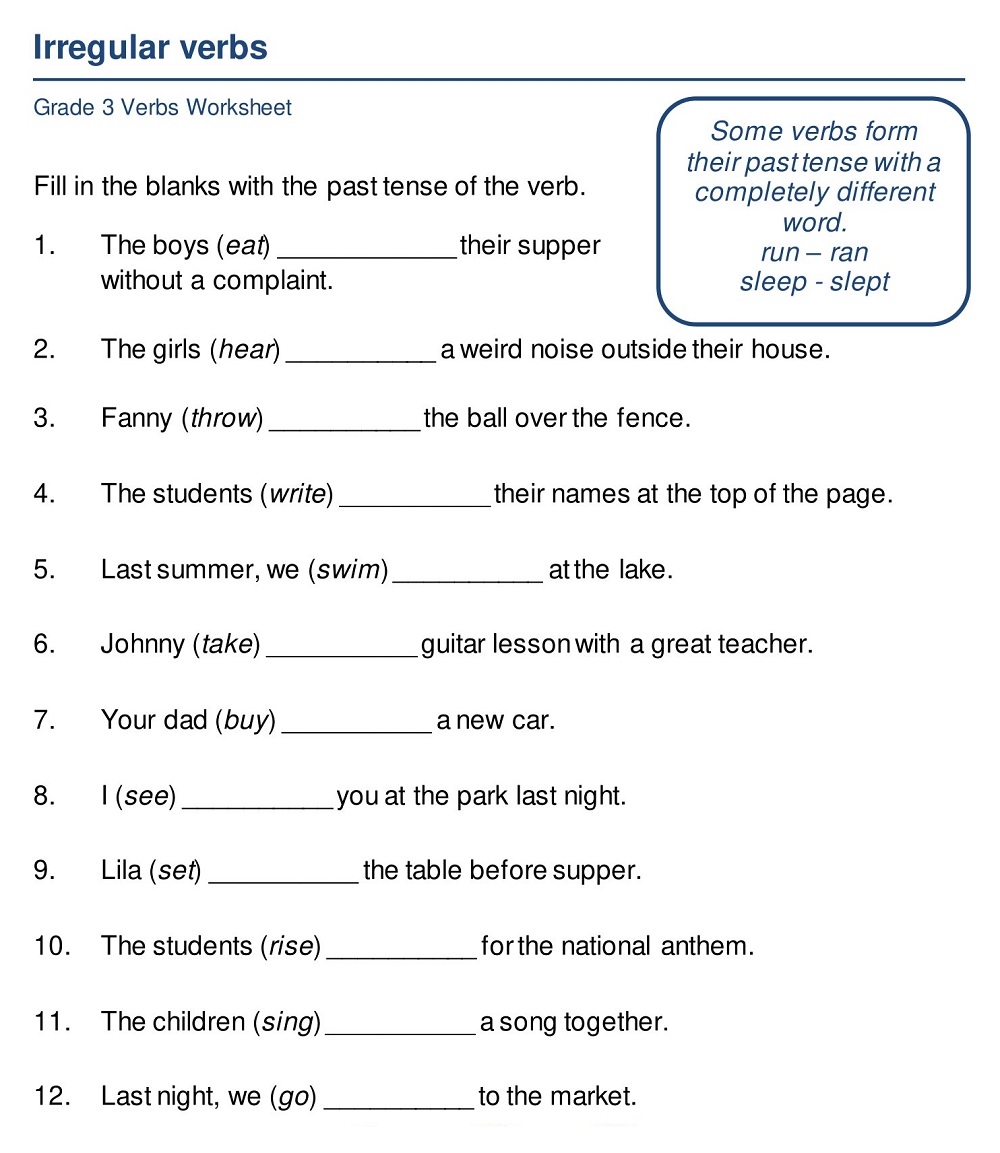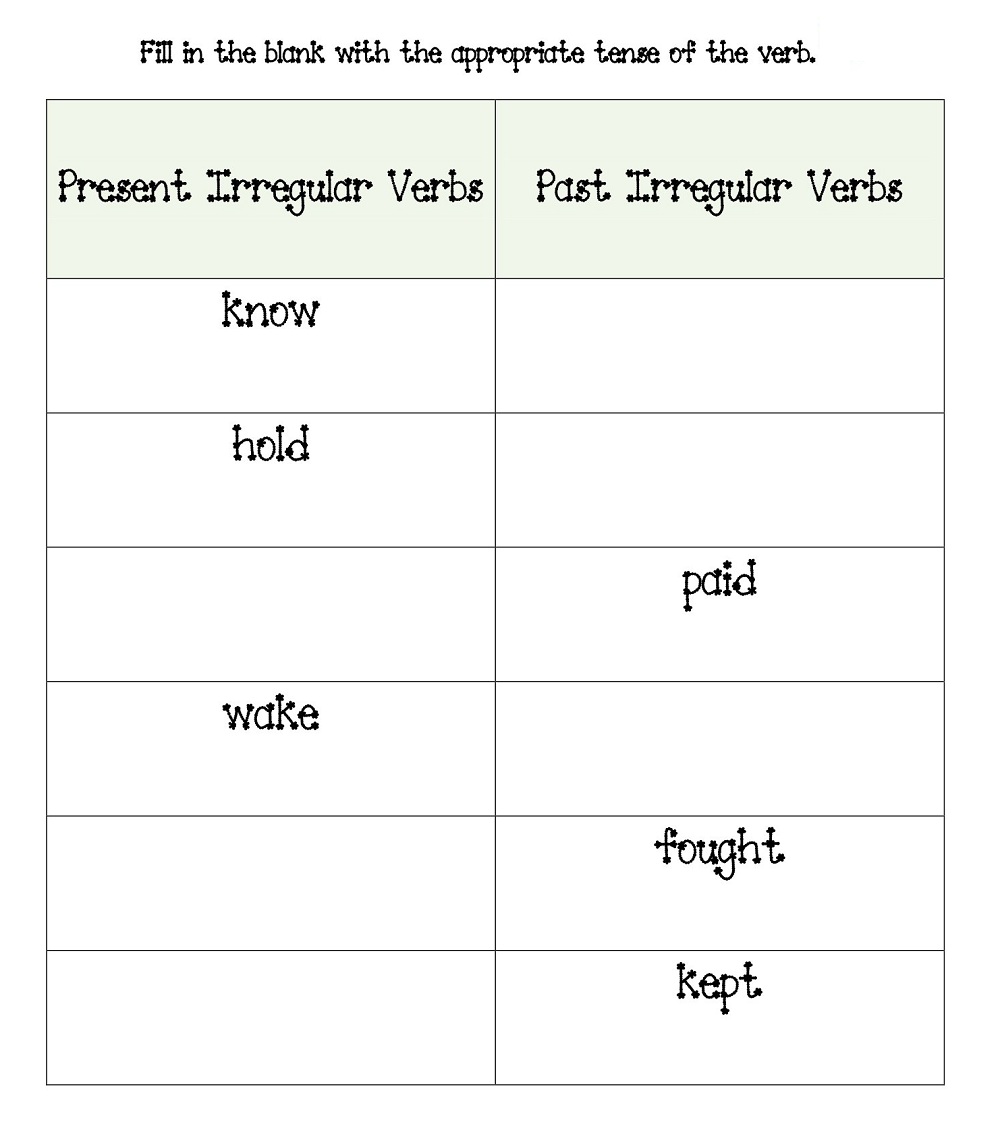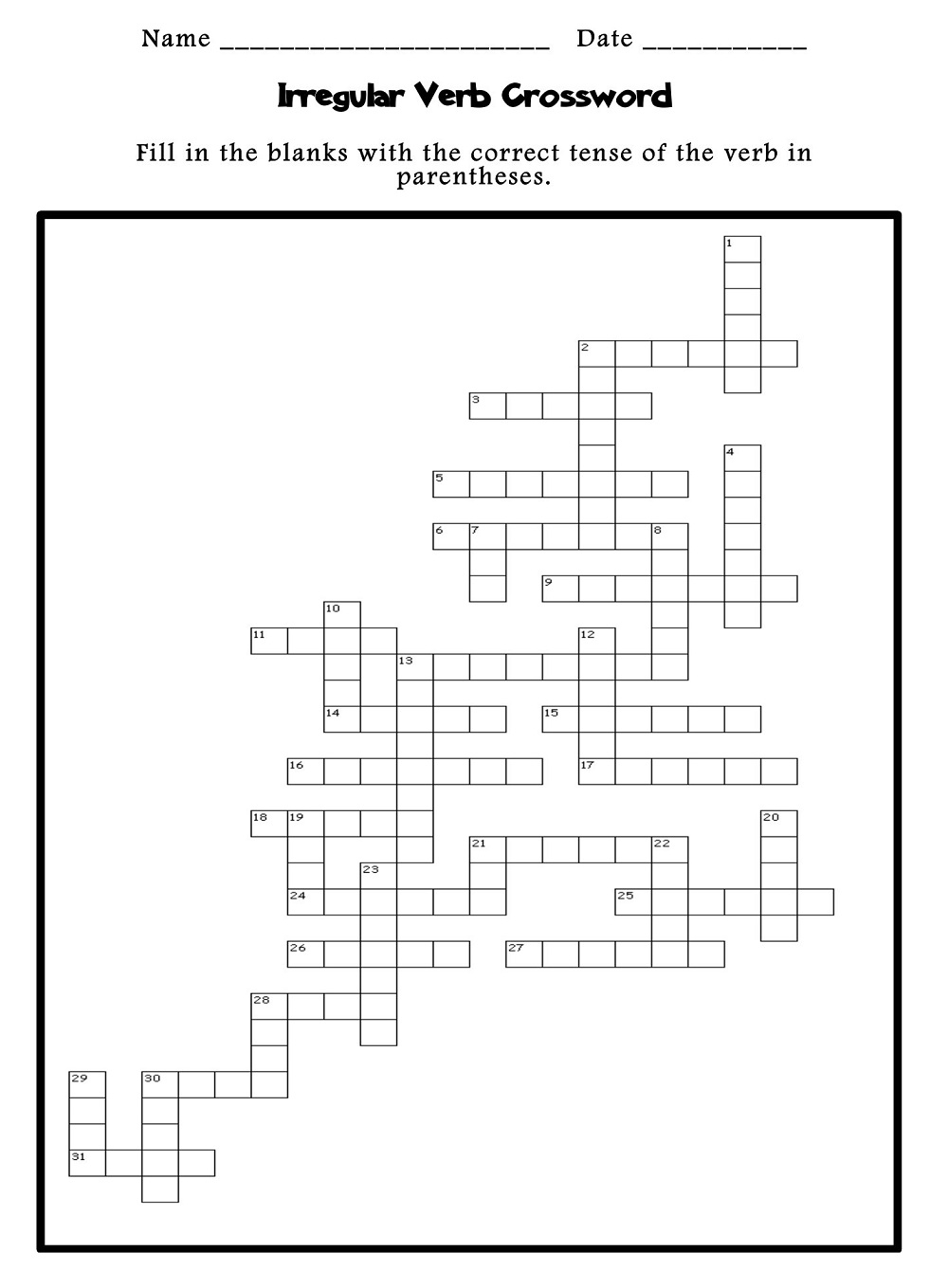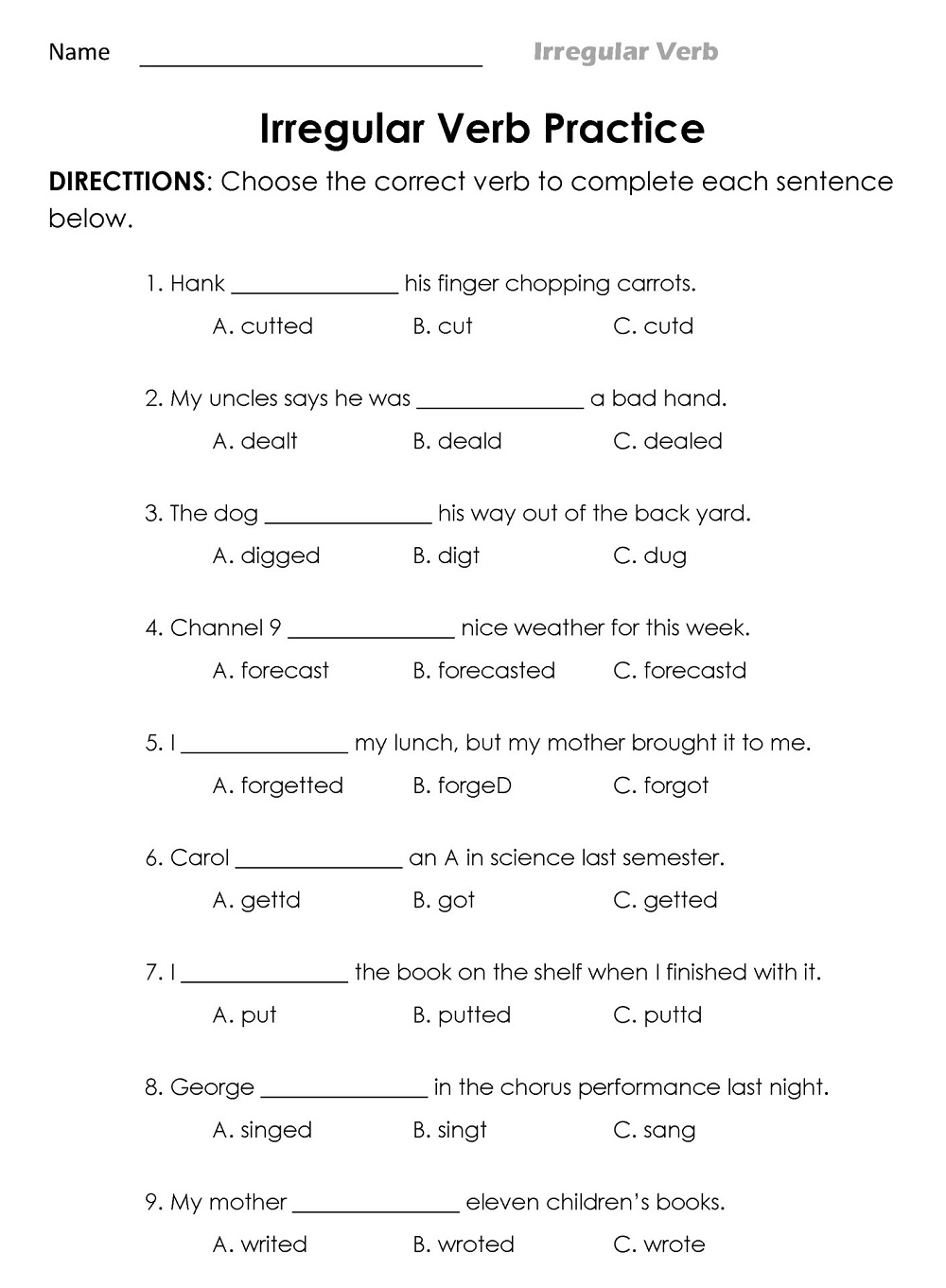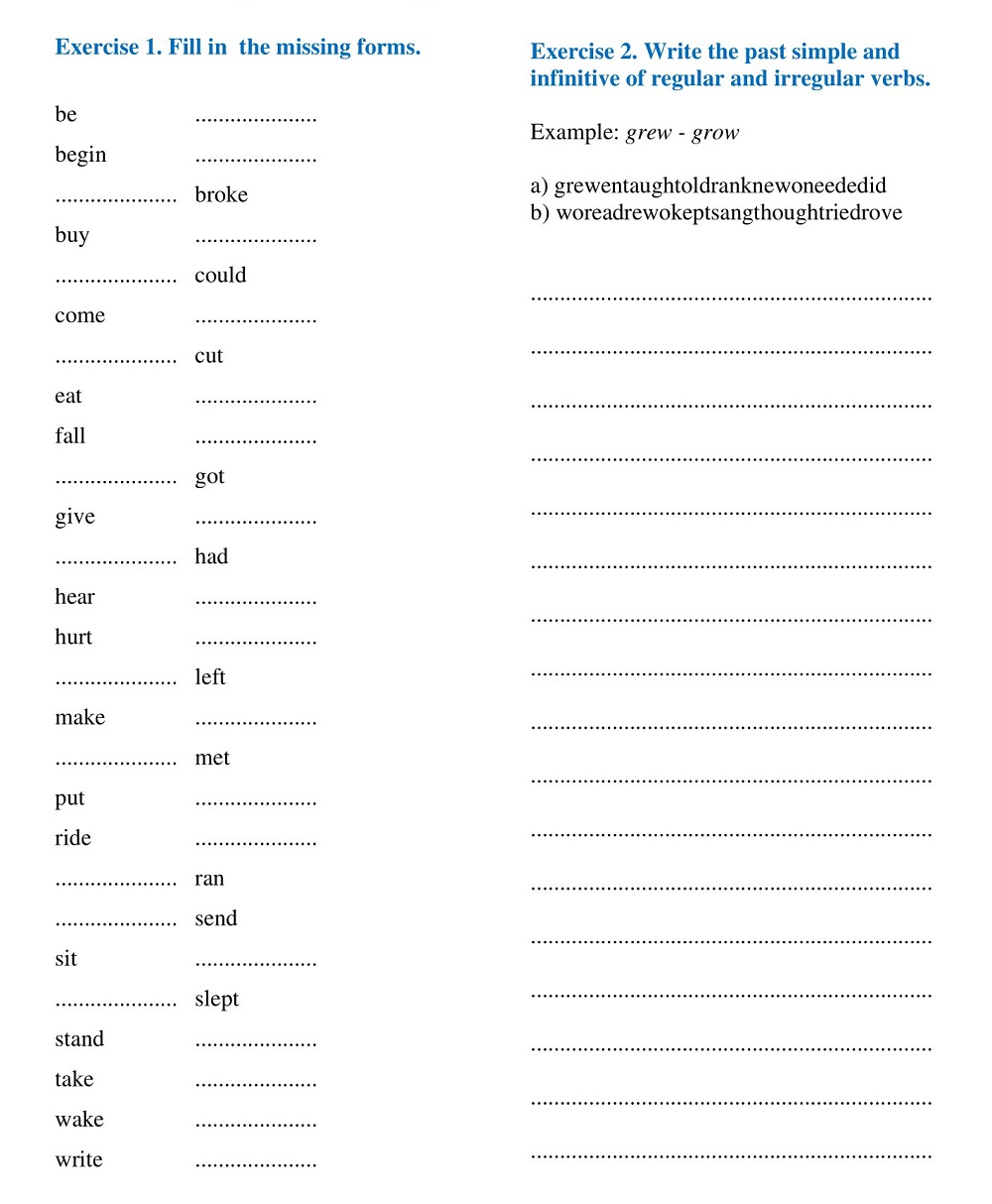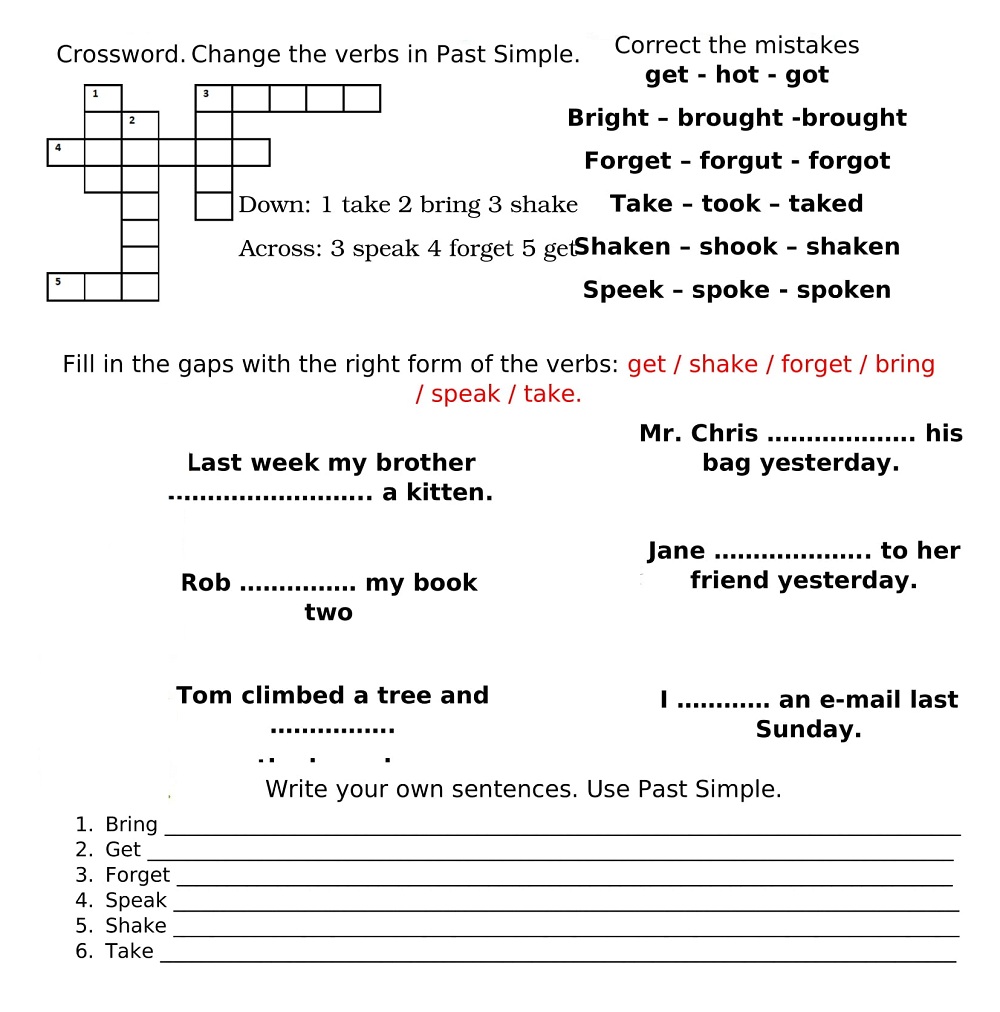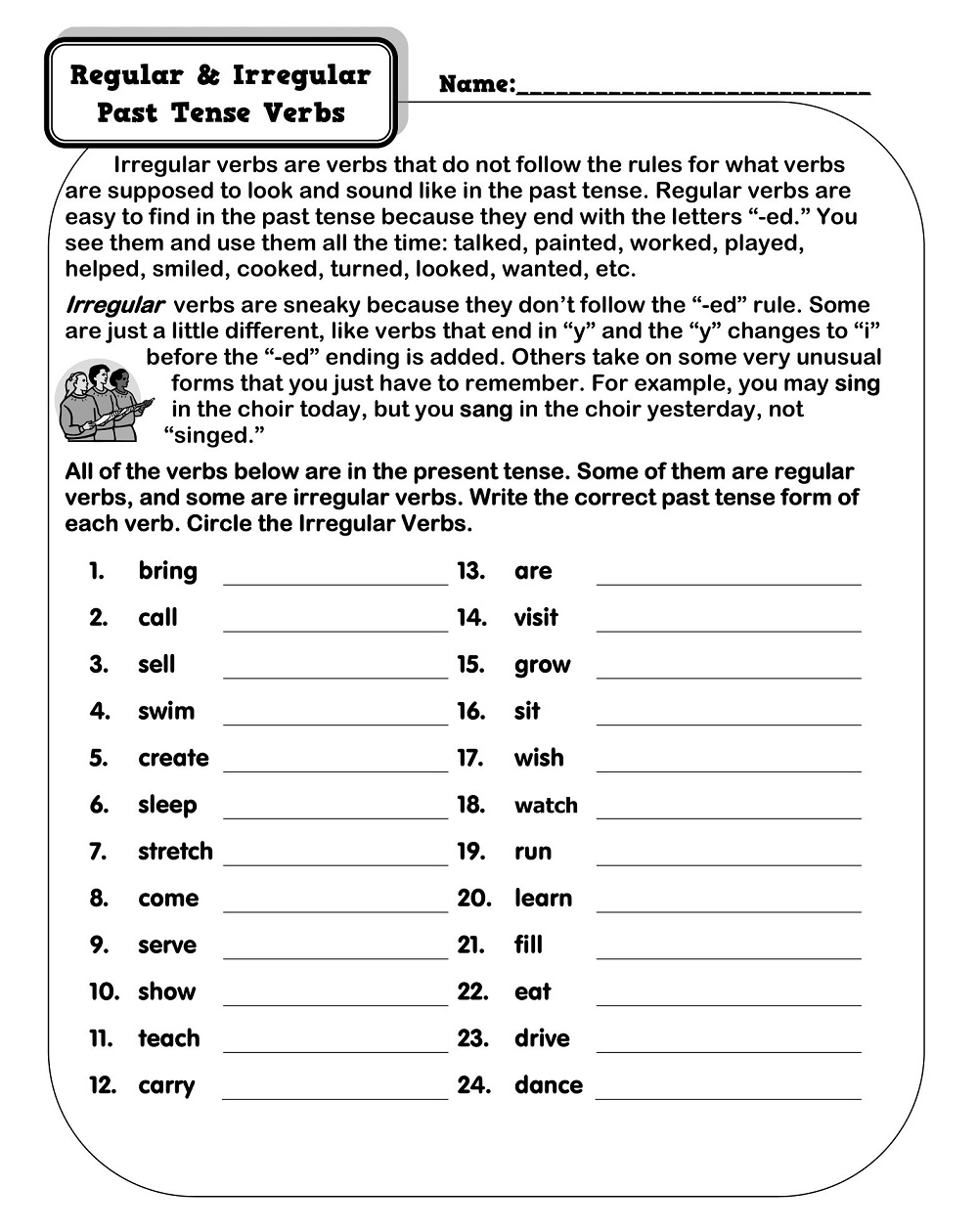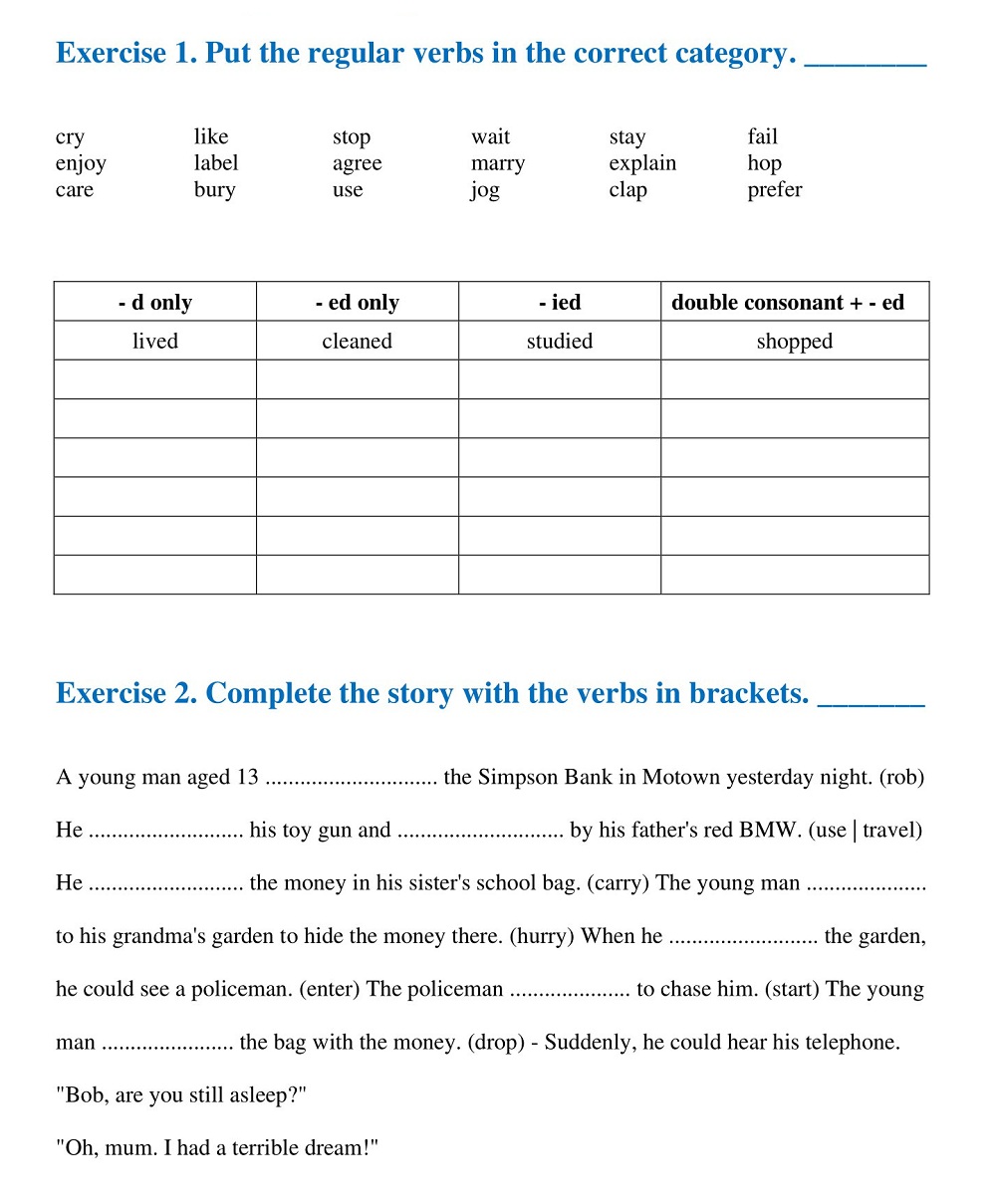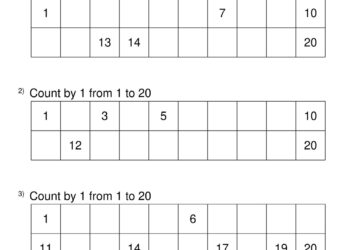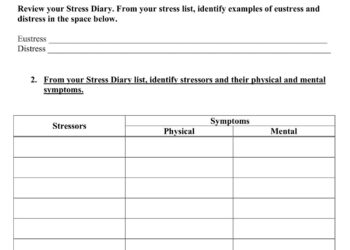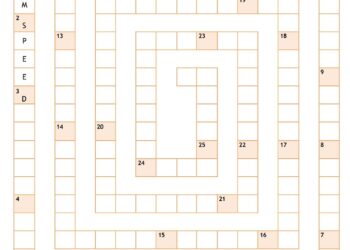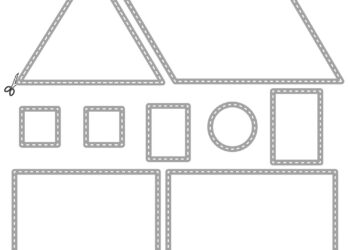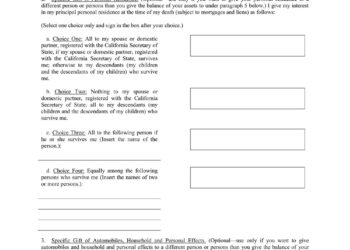Verbs are the most important part of any sentence as they give action to it. Regular verbs follow a specific pattern regarding conjugation in the past and present tense, making them relatively easy to remember and use. In English, regular verbs usually end with an ‘ed’ for past tense and often have a vowel before their last letter, although some suffixes may differ in different dialects. On the other hand, irregular verbs do not follow these rules, they take on their own, individual form in both present and past tenses, which means that they are much harder to predict or guess how to spell correctly.
While regular verb conjugations can be somewhat predictable, irregular ones must be memorized. Both types of verbs play a crucial role in creating strong sentences in any language. In this article, you’ll find a collection of free Printable Regular and Irregular Verbs Worksheet Templates and samples in PDF, Word, and Excel format that will help you to make your tense effective.
Download Free Printable Regular and Irregular Verbs Worksheets
Grade 2 Past Tense Irregular Verbs Worksheet
|
Grade 3 Irregular Verbs Worksheet
|
Irregular Verb Activities
|
Irregular Verbs Exercises
|
Irregular Verbs Grammar Drills
|
Irregular Verbs in Groups
|
Irregular Verbs Infinitive Past
|
Irregular Verbs Worksheet
|
List of Regular and Irregular Verbs
|
Regular & Irregular Past Tense Verbs
|
What is Regular and Irregular Verb
In English grammar, verbs are words that indicate an action or state of being. There are two categories of verbs: regular and irregular. Knowing the difference between them is important for learning how to form different tenses in the language correctly, as well as for understanding how to use verbs properly in any context. Here are some features of regular and irregular verbs and why they are so important.
Regular Verbs
Regular verbs usually follow a set pattern when conjugated. For example, with regular verbs in the present tense, you simply add “-s” or “-us” after the verb stem to create its third-person singular form (e.g., talk > talks). This makes it easy to remember how to form various tenses since the conjugations largely follow this pattern. Some common regular verbs include love, talk, play, learn, and work.
Irregular Verbs
Unlike regular verbs, irregular verbs do not follow a set pattern when conjugated. As such, you must memorize each verb’s unique conjugation patterns individually to use them correctly. For instance, the past tense forms of some irregular verbs may require spelling changes (e.g., eat > ate) while others may completely change their vowel sound (e.g., eat > ate). Examples of commonly used irregular verbs include take, see, do, go, and have.
Why are They Important in Grammar?
Knowing which category a verb falls into is extremely important for speaking and writing English accurately since it helps you determine whether you should use the base form or one of its other forms when forming sentences with that specific verb (e.g., I take/takes classes after school). Additionally, understanding how regular and irregular verbs differ allows you to quickly identify errors in your writing as well as recognize them in others’ work more easily so that any mistakes can be corrected quickly before they lead to confusion or miscommunication down the line.
A Guide to Creating a Regular & Irregular Verbs Worksheet
If you’re looking for a fun and engaging way to help your students practice their grammar skills, creating a regular and irregular verbs worksheet can be an effective strategy. Not only is it an easy way to reinforce the concepts of conjugation and verb tenses, but it also encourages critical thinking and problem-solving skills. Here are some steps for creating regular and irregular verbs worksheet.
Select Your Verbs
The first step in creating a regular and irregular verbs worksheet is deciding which words you’d like to include. To make it more interesting for your students, try using a mix of common verbs (e.g., “run”) as well as rarer ones (e.g., “skedaddle”). You could also combine both regular verbs (verbs that follow the same pattern when conjugated) with irregular verbs (verbs that change spelling or pronunciation when conjugated). This will give your students some variety as they work through their worksheets.
Create Your Worksheet Template
Once you have selected your set of verbs, the next step is to create the template for your worksheet. Start by writing down all the different forms of each verb in one column on the page, this will serve as a reference point for your students as they complete the task. Then move on to designing the actual exercise itself you can decide whether you prefer multiple-choice questions or open-ended prompts for students to fill in the correct answer themselves. It’s also worth considering how many questions or tasks you would like to include on each sheet you can always add more if needed.
Print Out & Distribute Your Worksheets
Finally, once you are happy with your design, print out multiple copies of your worksheets so that each student has their own copy to work on during class time or at home. You may want to consider adding some examples or additional notes at this stage too if there are any tricky concepts that might need clarification before handing out the sheets.
Common Mistakes to Avoid When Using Regular and Irregular Verbs
Using regular and irregular verbs effectively is important for many kinds of writing. Whether you’re crafting a business proposal or a college admissions essay, it’s crucial to understand when to use the correct verb form and avoid common mistakes. Common errors include using an incorrect verb form that results in a sentence with poor grammar and unclear meaning. Another mistake to watch out for is confusing similar verbs such as ‘lay’ and ‘lie’, or ‘affect’ and ‘effect’. Furthermore, using inappropriate tense can also be detrimental never forget to double-check the correct tense before submitting an assignment. Regular practice of identifying and correcting verb errors is essential if you want to write flawless essays or documents.
How to Identify Regular and Irregular Verbs in Sentences
With so many rules in the English language to learn, identifying regular and irregular verbs in sentences can seem daunting. However, with a few simple steps, you can quickly identify the type of verb used in a sentence. First, you must understand the definition of each, regular verbs follow standard verb conjugation and form the past tense by adding “-ed”, while irregular verbs do not change form when forming the past tense. Once armed with this knowledge, it’s important to look at words and assess if they are regular or irregular. If the word looks like it could be an infinitive verb (for example: “to eat”), then chances are it’s an irregular verb, while most other words should be treated as regular verbs instead. With these easy steps in hand, identifying regular and irregular verbs will soon become second nature.
Reference Link



